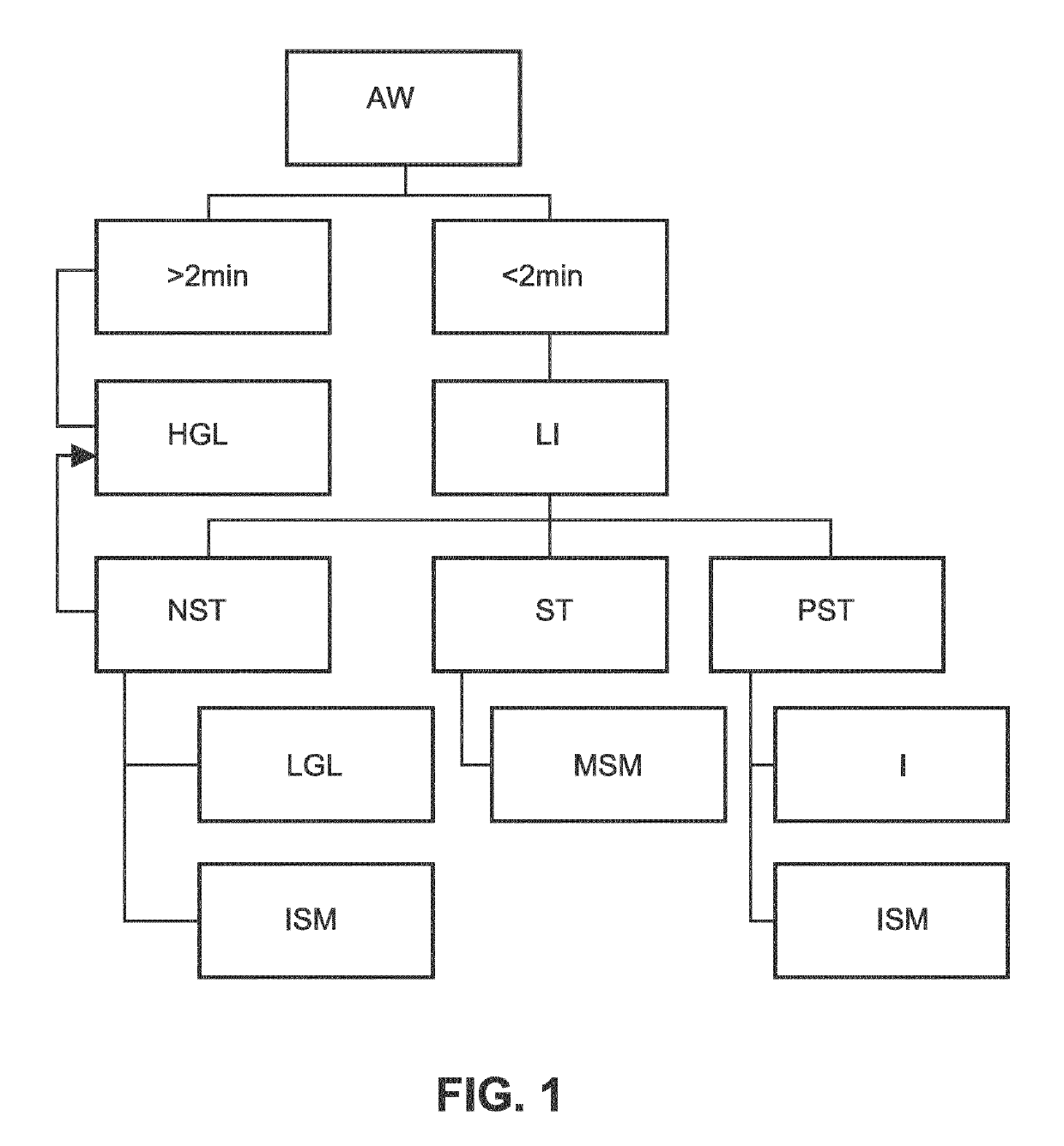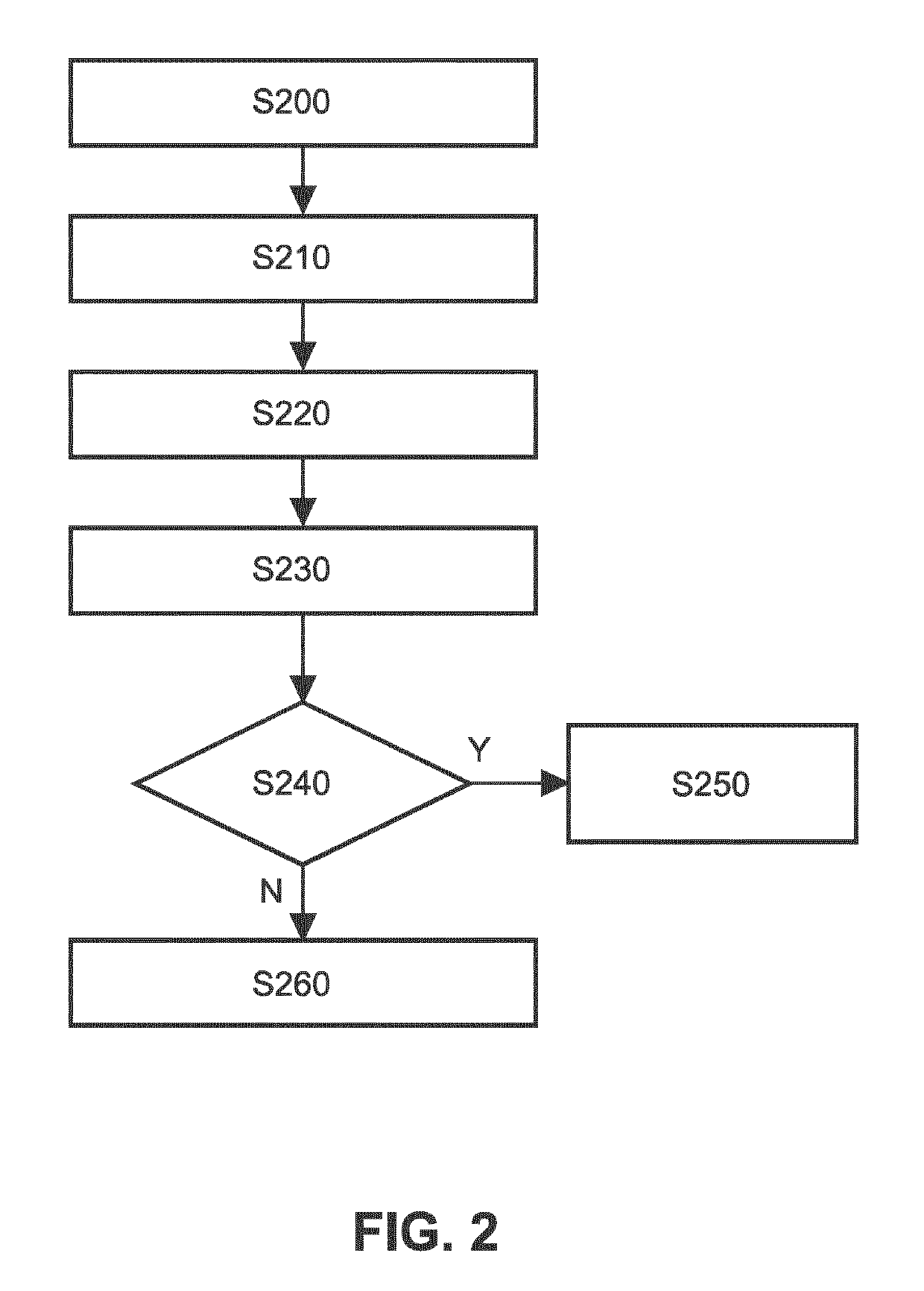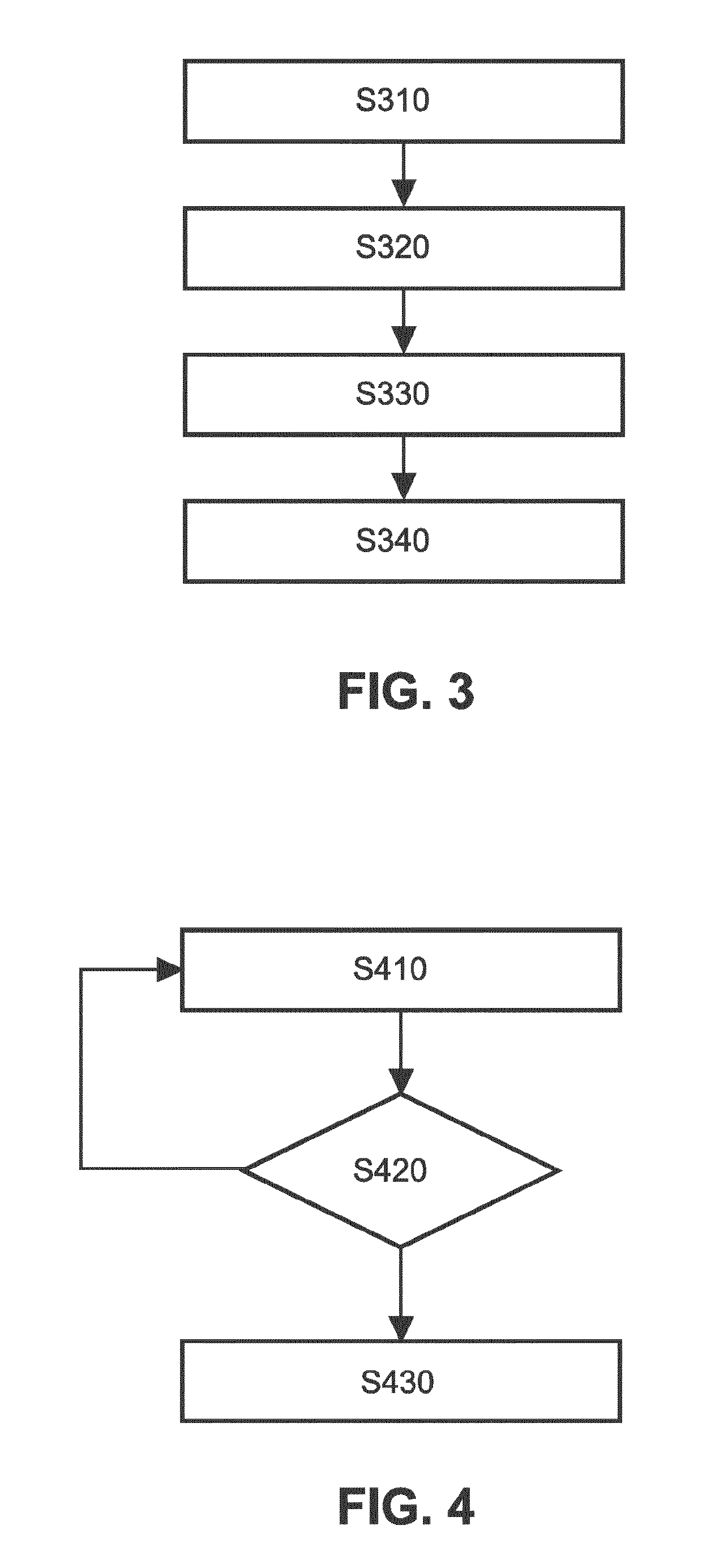Method and apparatus for cervical image analysis with improved reliability
a technology of image analysis and reliability, applied in the field of methods and apparatus for cervical image analysis with improved reliability, can solve the problems of reducing the transparency of epithelium, reducing the accuracy of false alarms for aceto-white regions, and reducing the endothelial function
- Summary
- Abstract
- Description
- Claims
- Application Information
AI Technical Summary
Benefits of technology
Problems solved by technology
Method used
Image
Examples
first embodiment
[0035]FIG. 2 shows a schematic flow diagram of an automated image analysis procedure according to a
[0036]In a first step S200, in order to identify the TZ in the cervix automatically and accurately, a post or pre acetic acid image (where the inner most boarder of the TZ i.e. a new SCJ (Sqamo-columnar Junction) is prominent) is registered with Lugol's iodine image (where outer most border of TZ i.e. an old SCJ is prominent) of the same patient at the same level of magnification using e.g. phase congruency and consistent elastic registration. Multi-stain images (obtained by applying saline, acetic acid and Lugol's iodine) having similar magnification levels are registered, which helps in propagating the anatomical segmentation of different anatomical regions across the stains. More specifically, the TZ (i.e. the region between new SCJ and old SCJ) can be identified by registering at least one Lugol's iodine image and one post acetic acid image (i.e. image after application of acetic a...
second embodiment
[0044]FIG. 3 shows a schematic flow diagram of a clustering based aceto-white region segmentation procedure according to the
[0045]In step S310, RGB (red, green and blue color) values of the transformation zone in post acetic acid images are converted to the Lab colour space. The Lab color space is a color-opponent space with dimension “L” for lightness and “a” and “b” for the color-opponent dimensions, based on nonlinearly compressed XYZ color space coordinates of the International Commission on Illumination (CIE). The “L” component closely matches human perception of lightness / whiteness. Then, in step S320, pixels are clustered in the transformation zone to two levels of whitish regions, i.e., dominant opacity change and minor opacity change using K-means clustering used to match opaque white and translucent white. K-means clustering is a method of vector quantization and aims at partitioning n observations into k clusters in which each observation belongs to the cluster with the n...
third embodiment
[0046]FIG. 4 shows a schematic flow diagram of an information gain based aceto-white region segmentation procedure as an alternative approach for aceto-whiteness detection according to a
[0047]In step S410, clustering based multilevel histogram thresholding is applied, where a multilevel thresholding process segments grey scale image (inside the TZ region) into several different similar (based on grey scale) regions. The maximum and minimum thresholds are derived from the dataset. Further details are described for example in Seth, S., Naik, S., Jayavanth, S., and Keswarpu, P., “Nucleus Segmentation in Pap-smear Images”, ICBME, 2011. This will help in finding the desired result iteratively. However farther steps is needed to terminate the region grow (with the change of threshold) to achieve the aceto-white regions.
[0048]Then, in step S420, information gain based aceto-white region segmentation is applied. This information gain based homogeneous region identification serves to isolate...
PUM
 Login to View More
Login to View More Abstract
Description
Claims
Application Information
 Login to View More
Login to View More - R&D
- Intellectual Property
- Life Sciences
- Materials
- Tech Scout
- Unparalleled Data Quality
- Higher Quality Content
- 60% Fewer Hallucinations
Browse by: Latest US Patents, China's latest patents, Technical Efficacy Thesaurus, Application Domain, Technology Topic, Popular Technical Reports.
© 2025 PatSnap. All rights reserved.Legal|Privacy policy|Modern Slavery Act Transparency Statement|Sitemap|About US| Contact US: help@patsnap.com



